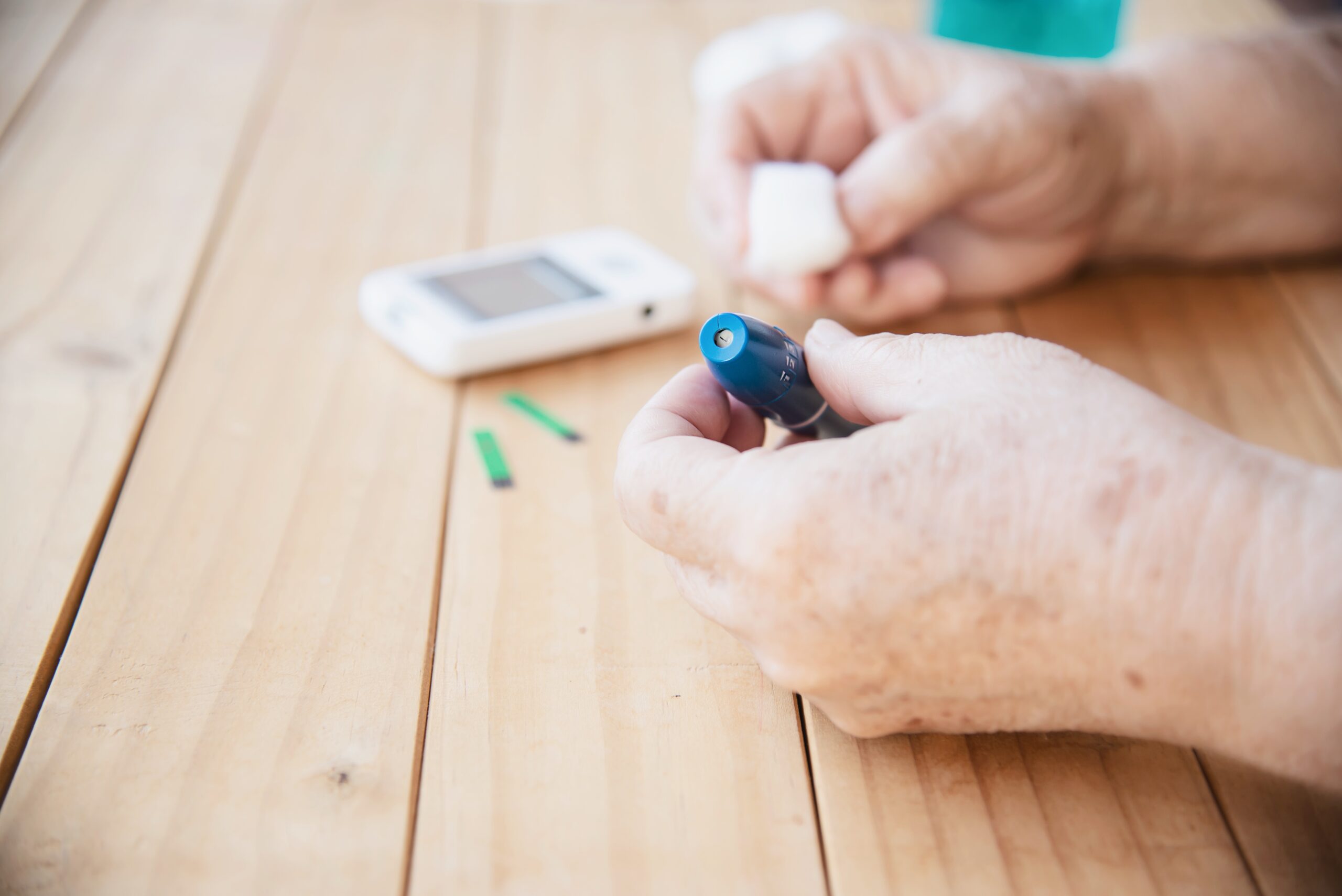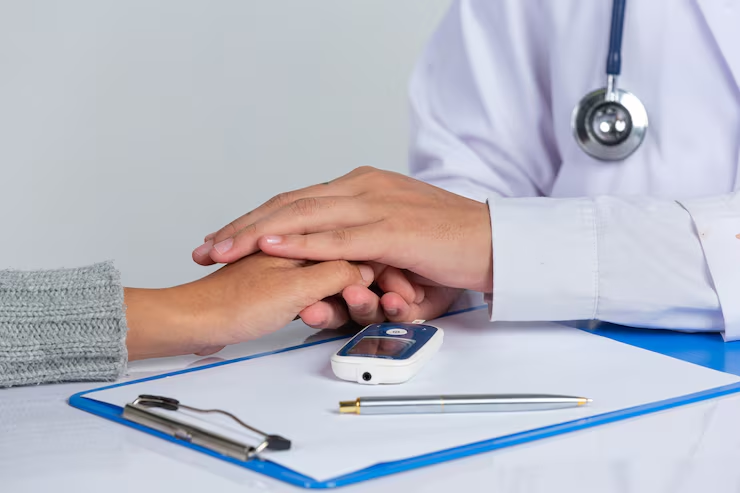Summary
Written by Dr. Muhammad Babar Bilal, PharmD, MPhil (Pharmaceutical Chemistry), BS Clinical Psychology. Dr. Bilal specializes in diabetes care, supplement safety, and patient counseling.
How Do I Keep My Fasting Blood Sugar Below 100?
Living with fluctuating blood sugar levels can feel like an uphill battle. One morning you wake up with your fasting blood sugar at 98, and the next, it’s suddenly 120. If you’ve been struggling to keep your fasting blood sugar below 100, you’re not alone. Many people face this challenge daily — even when they’re eating right or taking their medication.
But here’s the truth: with the right strategy, you can bring your fasting glucose into a healthy range and maintain it consistently. The goal isn’t to aim for perfection overnight but to understand how your body responds and make small, smart adjustments that work long term.
Why Your Fasting Blood Sugar Matters
Your fasting blood sugar (FBS) is one of the clearest indicators of how your body handles glucose when you’re not eating. Ideally, it should stay below 100 mg/dL. If it’s between 100–125 mg/dL, you’re in the prediabetic range, and anything above 126 mg/dL suggests diabetes.
The fasting number matters because it shows how your body manages insulin during rest. Overnight, your liver releases glucose to keep energy steady. If your insulin isn’t doing its job properly, sugar levels climb — even if you haven’t eaten.
High fasting glucose over time increases the risk of heart disease, nerve damage, and other complications. So, getting it under control isn’t just about numbers; it’s about protecting your long-term health and quality of life.
Common Pain Points Patients Face
“I’m doing everything right, but my fasting sugar is still high.”
This is one of the most common frustrations. You might eat clean, walk daily, and avoid sweets — yet your morning reading stays stubbornly above 100.
This often happens due to something called the “dawn phenomenon.” Around 4–8 a.m., your body releases hormones like cortisol and growth hormone, which raise blood sugar slightly. It’s a natural process, but in people with insulin resistance, it leads to higher fasting readings.
“I eat almost nothing at night, but my sugar spikes by morning.”
Many assume skipping dinner helps, but an empty stomach can trigger the liver to release extra glucose overnight. The result? Higher fasting blood sugar. The key isn’t starvation — it’s balance.
“I feel tired and stressed trying to control it all.”
Blood sugar management can be mentally exhausting. Constant checking, restricting food, and the fear of complications can wear you down. It’s important to simplify your approach and focus on what truly makes an impact.

Understanding What Controls Your Fasting Blood Sugar
To control your fasting blood sugar, you need to manage three key systems in your body:
Insulin Sensitivity – How well your cells respond to insulin.
Liver Glucose Production – How much sugar your liver releases at night.
Hormonal Balance – Stress, sleep, and other hormones that affect glucose.
When one of these systems goes off balance, fasting sugar starts rising.
Step-by-Step Plan to Keep Fasting Blood Sugar Below 100
Let’s go through an approach that actually works — one that’s practical, sustainable, and designed to help you feel better, not restricted.
Step 1 – Eat a Balanced Dinner
Your last meal of the day directly affects your fasting sugar.
-
Include lean protein (chicken, fish, tofu) to stabilize insulin.
-
Add fiber-rich carbs like quinoa, lentils, or vegetables to slow glucose release.
-
Avoid large portions of rice, white bread, or desserts close to bedtime.
Example: A small grilled chicken breast, sautéed vegetables, and half a cup of brown rice.
This kind of meal prevents both late-night glucose spikes and early-morning drops that cause rebound highs.
Step 2 – Avoid Eating After 9 PM
Your body’s insulin sensitivity decreases at night. Late-night snacks or sweet drinks can push sugar up and keep it there through the night.
If you crave something, go for a handful of nuts or a spoon of Greek yogurt — light, slow-digesting, and low in sugar.

Step 3 – Stay Active After Dinner
A short 10–15 minute walk after dinner can lower blood sugar significantly. Movement helps muscles absorb glucose without needing much insulin.
This simple habit can make the difference between waking up at 120 and waking up at 95.
Step 4 – Manage Stress Before Bed
Cortisol, the stress hormone, can raise blood sugar levels overnight.
To control it:
-
Do deep breathing or light stretching before bed.
-
Avoid late-night news or screen time that triggers anxiety.
-
Try a calm bedtime routine: dim lights, herbal tea, gratitude journaling.
A relaxed body handles glucose far better than a tense one.
Step 5 – Prioritize Quality Sleep
Poor sleep is one of the most overlooked reasons for high fasting glucose. When you don’t rest well, insulin sensitivity drops.
Aim for 7–8 hours of uninterrupted sleep in a dark, cool room. Even one night of poor sleep can raise fasting sugar the next morning.
Step 6 – Choose the Right Supplements (with Professional Guidance)
Some supplements can support better glucose control — but always choose science-backed ones and talk to your pharmacist or doctor first.
Options with good evidence include:
-
Berberine: Improves insulin sensitivity and lowers glucose.
-
Magnesium: Helps regulate blood sugar and insulin.
-
Alpha-lipoic acid: Supports nerve health and reduces insulin resistance.
-
Chromium: May help improve glucose tolerance.
These aren’t replacements for medication but can complement your daily care when used safely.
Step 7 – Track Patterns, Not Just Numbers
Instead of stressing over a single high reading, track your fasting sugar for at least two weeks. Look for trends.
-
Is it higher after late dinners?
-
Does it improve when you walk after meals?
-
Is stress playing a role?
Once you identify triggers, you can adjust confidently instead of guessing.
Step 8 – Stay Hydrated
Dehydration can cause temporary rises in glucose levels.
Drink water consistently through the day, especially before bed. Avoid sugary drinks and limit alcohol at night.
Step 9 – Reassess Medications with Your Doctor
If you’re on diabetes medication, timing and dosage can affect fasting results.
For example, some oral medications wear off overnight, leading to a morning spike. Discuss this with your doctor or pharmacist — sometimes, a small adjustment can make a big difference.
Step 10 – Regularly Check HbA1c
Fasting glucose is a snapshot; HbA1c shows your 3-month average.
If your fasting sugar is borderline but HbA1c is still in range, don’t panic. Track both to see the full picture of your glucose control.
Natural Habits That Help Keep Blood Sugar Stable
-
Eat smaller, frequent meals to avoid huge glucose swings.
-
Include healthy fats (avocado, nuts, olive oil) to slow carb absorption.
-
Avoid refined carbs — replace white rice, bread, and pastries with whole grains.
-
Stay consistent — irregular meal times confuse your metabolism.
-
Add strength training — muscle tissue absorbs more glucose, even at rest.
Emotional Side of Managing Fasting Sugar
It’s not easy to live with the constant pressure of numbers and readings. Many people silently carry frustration and fear of what might happen if things get worse.
Remember: you are not your glucose reading. Every number is data, not judgment. Use it to learn, not to blame yourself.
Small progress — like going from 120 to 105 — is a real victory. Celebrate it. Over time, consistency brings results. Managing fasting glucose is a daily relationship with your body, not a one-time fix.
When to See a Professional
If your fasting glucose stays above 110 despite lifestyle changes, consult your doctor. Persistent high readings might mean:
-
Medication adjustment is needed.
-
There’s hidden insulin resistance or hormonal imbalance.
-
Sleep apnea or other metabolic factors are involved.
Getting professional help early can prevent complications and help you design a personalized plan.
Final Thoughts – Make It Simple, Make It Yours
Keeping your fasting blood sugar below 100 isn’t about chasing numbers or strict diets. It’s about creating a rhythm that your body understands — steady meals, regular movement, restful sleep, and manageable stress.
Start small. Pick one change at a time — maybe it’s walking after dinner or fixing your sleep schedule. Over time, these small habits will build momentum and improve your fasting glucose naturally.
Remember, the goal is control, not perfection.
With patience, consistency, and the right knowledge, you can wake up to healthier mornings — and a fasting blood sugar that finally stays below 100.
